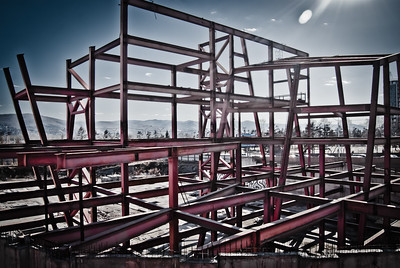No one knows exactly when a recession starts. Inflation and the moves the Fed has made to stop it have added a layer of intrigue to the current economic cycle. The Fed says it’s beginning to see hints of the cooldown it’s been looking for, but it is prepared to crank interest rates upward again to apply the brakes to the US economy. All this impacts the construction outlook for the current year.
No one loves new construction projects like higher education administrators. But planned construction may have to wait, due to a variety of factors – with inflation being only one show-stopper. Construction Dive recently examined hints of what the construction landscape may look like in 2023.
Every construction project begins with designs. The Architecture Billing Index is an activity metric that the American Institute of Architects tracks throughout the calendar year. In short, the index looks at how much work architectural firms are billing each month. It provides a sneak peek at the construction activities to follow.
Between March and October, the index increased in only one month (August) and dropped by more than 10 points overall during that period. The last update to the ABI for 2022 occurred in December, when the index registered a mark of 47.5, which was a slight increase from November’s 46.6.
In January, the index registered 49.3, which represents a “softer” start to 2023 than what the index saw in January 2022. The next update to the index occurs on March 22. All of this points to fewer commercial construction projects in the pipeline in 2024.
Construction backlog, other stoppers going strong
The Association of Builders and Contractors tracks construction backlogs – the inability of construction firms to start or complete projects. Beginning in May 2022, the construction backlog peaked, and remained relatively high throughout the summer months. The inability of firms to reduce the backlog points to serious supply problems.
Materials costs and labor shortages are putting pressure on the industry on one hand. On the other hand, the Infrastructure Investment and Jobs Act (IIJA) has made it rain in terms of the availability of federal funds for construction projects. When the money begins to flow, the demand for construction services is expected to rise substantially. This will simply exacerbate the problems of materials costs and availability, as well as labor shortages. In short, it will make it even harder and more expensive to get buildings built in 2024 and perhaps in 2025.
So the point here is that rising interest rates, rising demand for building services related to the IIJA, rising materials costs, declining materials availability, and rising interest rates suggest that now is not the time to build anything on campus – except maybe enrollment. It further suggests that the $10 per credit hour rise in tuition costs the WCC Administration predicted in 2019-2020 might now look more like $20-$30 per credit hour if the Administration still expects the students to finance the cost of construction for the “Advanced Transportation Center.”
In the absence of public funding, and considering both the vast increases in costs and time, and the underwhelming need for more space on campus, perhaps it is time to reconsider the rapidly vanishing wisdom of building the “Advanced Transportation Center.”
Photo Credit: Alex Kislow , via Flickr














